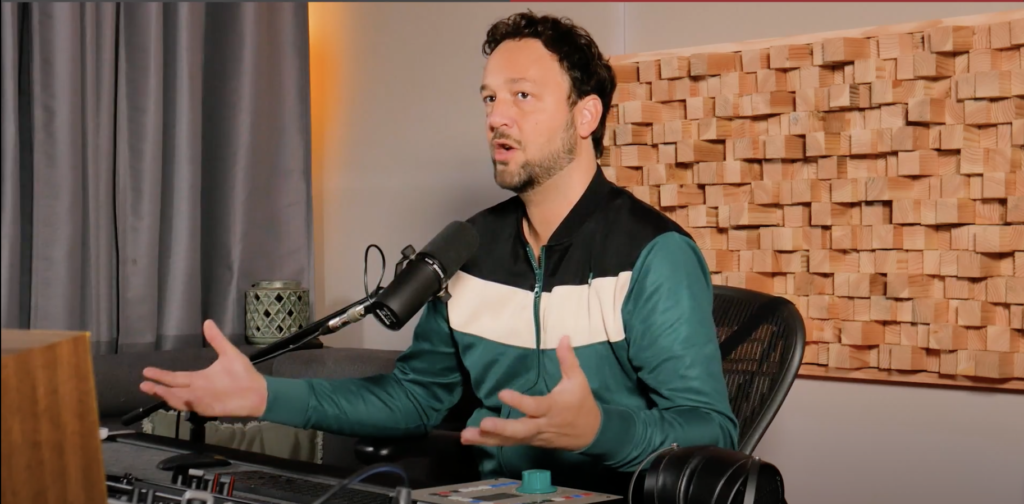Course content
Bob discusses the main ideas surrounding vocal chops specifically the frequencies that are important to hone in on to make the chops stand out in the mix. Troubleshooting between different styles of eq’s, Bob shows how specific eq’s suit specific purposes when it comes to eqing vocal chops and how to effectively fit vocal chops in the mix.
In the final lesson of this series, Bob takes us through his signal flow for compression on the master. He goes through his series of outboard compressors showing how each one feeds into the other and the software tools he uses to compress after the outboard processing has been applied. While Bob is using Logic here, the techniques suggested by Bob can be applied to compressors of any DAW and universally applied to mastering music of all styles and genres.
Bob goes through his techniques for compressing lead vocals and vocal ad-libs. Primarily using the LA-2A compressor, Bob shows how to bring dynamic consistency to vocals and make them stand out in the mix while fitting them properly among the other elements of the song. For ad-libs, Bob shows how to properly position them through compression so that they can remain out of the way of the main vocal yet still be present in the mix.
In this tutorial, Bob covers how he utilizes compression on the bass to give it a little extra punch and impact. He specifically covers the Elysia outboard compressor and the 1176 compressor utilizing serial compression between the two to make a nice punchy and clean bass sound. While Bob utilizes two very specific compressors in the lesson, the techniques he discusses can be modeled to effectiveness using virtually any compressor of choice.
Bob covers in depth his approach to compression on drums using both outboard and DAW gear. Running through his signal chain, Bob shows the specific settings and types of outboard compressors he uses for drum bus processing as well as the use of compressors in the DAW for certain elements of the drum bus. Furthermore, he covers parallel compression techniques to bring out color and texture in the drums.
Bob goes over troubleshooting methods for minor clipping that may occur when rendering final mixes. Especially in areas of songs where high frequency information goes away such as if the entire song is sent through a low pass filter, clipping is prone to arise in subtle amounts, however Bob shows a simple fix to these issues by means of a declipper plugin. A key point of this lesson is the approach of sometimes the simple answer is what is best for the problem.
Bob takes multiple songs from Porter Robinson to A/B his mix of KSHMR’s The Little Voice. He shows how he sets up the A/B of the mixes in his DAW as well as what he is specifically looking to hear when switching between the different songs. Employing these techniques when matched up against great mixes can help producers fine tune their mixes a lot more and end up with more successful results.
In this tutorial, Bob talks about various methods he employs to properly A/B EQ’s for maximum effect. Going through his workflow and showing the different speakers he employs for the A/B process, Bob thoroughly breaks down the mindset behind his A/Bing and how he uses it for different elements of the mix. A/Bing is an incredibly effective tool when used appropriately as Bob points out, therefore the tips he discusses can be very useful for producers wanting to implement better EQ techniques in their songs.
In this lesson, Bob covers low end mixing concepts applicable for the Kick and Bass. Low-end is typically a common mixing hurdle many producers struggle with as Bob points out at the start of the lesson. His tips on maintaining consistency in the sub frequencies, utilization of phase inversion, and eq bridge the gap that allows for clean and punchy low ends to drive the mix forward.
Adding onto his work in the previous Mastering EQ lesson, Bob goes in depth on more unique EQ tricks that can help bring the master to life. Techniques such as mid-side EQ, Dynamic EQ, and the utility of the Linear Phase EQ are all covered in this video and specifically looked at under the frame of mastering. Bob discusses further how he uses certain EQ plugins for specific purposes such as corrective eq only or color eq only.
Bob expounds upon the EQ concepts discussed previously in this series as he breaks down the different styles of eq he employs on the master of KSHMR’s song Gypsy Waltz. Ranging from different mid-range and high frequency focused eq tricks, Bob exhibits how to bring clarity and shine to songs during their final step before completion. All of the eq’s that Bob used for this song are in his native DAW of Logic however these steps are easily transferable between different DAWs and styles of music.
In this lesson, Bob takes us through KSHMR’s song Over You and shows how he sets up the initial mix. Bob shows us how he chooses to organize stems by groups and shows us his own analog mixing setup. Furthermore, Bob goes into detail on mixbus processing tips and tricks to apply before the mixing processing begins with a variety of compressors, EQs, and maximizer tools. He offers a variety of options for producers to implement into their own workflow that can be applied to any DAW utilizing only software gear, only analog gear, or a hybrid of both.
In this tutorial, Bob covers different eq techniques specifically for drums and what you can achieve with them. AB-ing through different styles of eq’s and looking at how eq’s fit appropriately in context of the song provide the basis for Bob’s eq decisions as he shows how to bring out character in the drums. Dubbed as “the most important part of the mixing process” by Bob, these eq techniques can be used universally in all styles of music and DAWs.
Bob takes us to the final stage of his work on Magic by showing his process in mastering the song. With all the mastering done “in the box” (no outboard gear used), producers can easily transfer Bob’s methods and tricks for mastering to their own productions without the need for any external equipment. Gain, EQ, Compression, and Imaging techniques specifically for mastering are all covered extensively in this tutorial.
Moving on from the verse in this lesson, Bob shows the production elements he changed and added to the drop of Magic. He runs through his process behind changing certain samples in the song and processing elements differently than the original mix as well as adding elements such as chord harmonies around the lead synth to make it stand out in the mix and fill the mix out more.
In this lesson, Bob takes us through how he organized the stems for KSHMR’s song Magic and the various production elements he added to the song’s verse. Ranging from vocal processing to chord support and harmonies, Bob gives detailed insight into not only the mixing aspects of his work but also how he produces with mixing in mind to give the song more fullness and flair. The various vocal and synth tips Bob discusses can be employed to bring the mix more to life.
In the final video of this series, Bob takes us through the last stages of mastering. He shows how to prepare a clean and smooth intro and outro for a song removing any unnecessary noise or artifacts that would damage the final product.
Bob covers a wide scope of techniques commonly used by him in the mastering stage. Including topics such as volume automation to make the drop hit harder, A/Bing tips for reference mixes, EQ tricks to add fullness and brightness to the song, and stereo imaging tips for filling up the stereo space, Bob gives a holistic overview of how to take a mixed song to the next level. Producers of any DAW and style of music can implement the technical teachings of Bob’s mastering tips to polish and finalize their songs.
Bob expands upon his use of eq by detailing how the different graphic and console eq’s he chooses to use can be applied for vocal treatment both on bus processing and individual vocal stems. Furthermore, Bob discusses unique reverb tricks producers can apply on vocals along with sidechaining techniques for vocals to add clarity and space. Utilizing just stock effects, producers can apply these techniques to a variety of different genres and styles.
Bob details his go to processing methods for achieving good mixes with the bass and synth sounds. More so than just standard eq cuts and boosts, Bob offers some key tricks that can help bring mixes to the next level such as eq bell automation, console eq tricks with the ssl and maag eq, as well as analog compressor tricks that can be applied to the bass for added punch. While Bob is using specific gear such as Pro-Q and the Pultec EQ, the methods discussed here transfer over well to any DAW especially those with stock console-style eq’s.
Building upon the previous lesson, Bob dives into his methods for processing drums in Over You. He takes us through a detailed look on the different effects he normally reaches for to process the drum bus as well as individual drum elements. Utilizing a variety of eq’s both graphic and console, individual drum elements can have much more space dedicated to them in the mix making the drums a lot more cohesive overall.

Bob discusses the main ideas surrounding vocal chops specifically the frequencies that are important to hone in on to make the chops stand out in the mix. Troubleshooting between different styles of eq’s, Bob shows how specific eq’s suit specific purposes when it comes to eqing vocal chops and how to effectively fit vocal chops in the mix.
